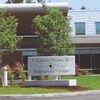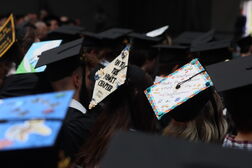Processing Your Payment
Please do not leave this page until complete. This can take a few moments.
- News
-
Editions
-
- Lists
-
Viewpoints
-
Our Events
-
Event Info
- Women's Leadership Forum 2025
- On the Road with Mainebiz in Bethel
- Health Care Forum 2025
- On The Road with Mainebiz in Greenville
- On The Road with Mainebiz in Waterville
- Small Business Forum 2025
- Outstanding Women in Business Reception 2025
- On The Road with Mainebiz in Bath
- 60 Ideas in 60 Minutes Portland 2025
- 40 Under 40 Awards Reception 2025
- On The Road with Mainebiz in Lewiston / Auburn
- 60 Ideas in 60 Minutes Bangor 2025
Award Honorees
- 2025 Business Leaders of the Year
- 2024 Women to Watch Honorees
- 2024 Business Leaders of the Year
- 2023 NextUp: 40 Under 40 Honorees
- 2023 Women to Watch Honorees
- 2023 Business Leaders of the Year
- 2022 NextUp: 40 Under 40 Honorees
- 2022 Women to Watch Honorees
- 2022 Business Leaders of the Year
-
-
Calendar
-
Biz Marketplace
- News
- Editions
- Lists
- Viewpoints
-
Our Events
Event Info
- View all Events
- Women's Leadership Forum 2025
- On the Road with Mainebiz in Bethel
- Health Care Forum 2025
- On The Road with Mainebiz in Greenville
- On The Road with Mainebiz in Waterville
- + More
Award Honorees
- 2025 Business Leaders of the Year
- 2024 Women to Watch Honorees
- 2024 Business Leaders of the Year
- 2023 NextUp: 40 Under 40 Honorees
- 2023 Women to Watch Honorees
- 2023 Business Leaders of the Year
- + More
- 2022 NextUp: 40 Under 40 Honorees
- 2022 Women to Watch Honorees
- 2022 Business Leaders of the Year
- Nomination Forms
- Calendar
- Biz Marketplace
College of the Atlantic plans major expansion
 Courtesy / College of the Atlantic
The first phase of College of the Atlantic's overall 45,000-square-foot expansion will be the 29,000-square-foot Center for Human Ecology, designed to passive house standards.
Courtesy / College of the Atlantic
The first phase of College of the Atlantic's overall 45,000-square-foot expansion will be the 29,000-square-foot Center for Human Ecology, designed to passive house standards.
 Courtesy / College of the Atlantic
With completion expected by September 2020, the Center for Human Ecology will include new science laboratories, flexible lecture halls, faculty offices, art and design studios and a teaching greenhouse.
Courtesy / College of the Atlantic
With completion expected by September 2020, the Center for Human Ecology will include new science laboratories, flexible lecture halls, faculty offices, art and design studios and a teaching greenhouse.
College of the Atlantic in Bar Harbor is planning a 45,000-square-foot expansion that will include science laboratories, flexible lecture halls, faculty offices, art and design studios, teaching and propagation greenhouses, experimental theater, art gallery and welcome center and entrance plaza.
According to a Jan. 28 news release, COA trustees unanimously approved construction of the $13 million first phase of construction, a 29,000-square-foot building Center for Human Ecology, at their Jan. 26 winter meeting.
E.L. Shea Inc. in Ellsworth will lead the first phase, expected to begin this spring, with completion expected by September 2020.
The architects for the project are Susan T. Rodriguez, an architecture and design firm in New York City, and GO Logic of Belfast.
The design team worked with COA staff, students and faculty over the course of more than a year in developing the design for the building, the release said. The light-filled two-story center will have views of Frenchman Bay.
Construction of the center will follow the passive house standard for energy performance, representing an 80% reduction in energy use versus comparable code-compliant construction, Timothy Lock, of GO Logic, said in the release.
The center will be the largest passive house project built for this climate, he said, noting that Maine’s passive house movement has centered largely on academic projects.
According to the release, the project is expected to transform the school’s waterfront campus, creating state-of-the-art spaces for interdisciplinary learning and collaboration, enhancing community engagement and providing a “new front door” to the nearly 50-year-old college.
The welcome center and entrance plaza will house admissions offices and act as a front door for the college.
“The Center for Human Ecology will exemplify the experiential model of education pioneered at College of the Atlantic, where research, mentoring, socializing, and experimentation come together to create new knowledge, new ideas, and new works, both for our island and for the world at large,” College of the Atlantic President Darron Collins said in the release. “The center will embody our interdisciplinary mission, gathering sciences, arts, and humanities under one roof and inspiring engaged exploration for generations to come.”
The college’s strategy toward sustainability, inspired by its commitment to the preservation of the natural world and a campus culture that promotes active involvement in that effort, informed the design approach, the release said.
That extended to site selection, solar orientation, use of local and recycled materials, onsite renewable energy sources and the high-performance envelope and design. Beyond energy conservation, the design integrates carbon sequestration through high-density wood products, expected to radically reduce the overall carbon footprint in relation to similar buildings.
The building has public space and circulation coming together at its center to create flexible multipurpose teaching and gathering spaces on both levels. Angled walls align to the primary geometry of the building, focusing activity around a shared center while framing panoramic views south towards campus along a two-story glass façade.
COA’s last new academic building was built in the 1980s, when the student body was fewer than 200. The student population today, which is kept “strategically small,” is capped at approximately 350.
The project, including an endowed maintenance budget, is financed entirely through philanthropy. Funding is made possible by lead gifts from Trustees of the Shelby Cullom Davis Charitable Fund, led by Andrew Davis, and Trustees of College of the Atlantic.
COA was named the No. 1 Green College in the U.S. by the Princeton Review in 2016, 2017 and 2018.














Comments